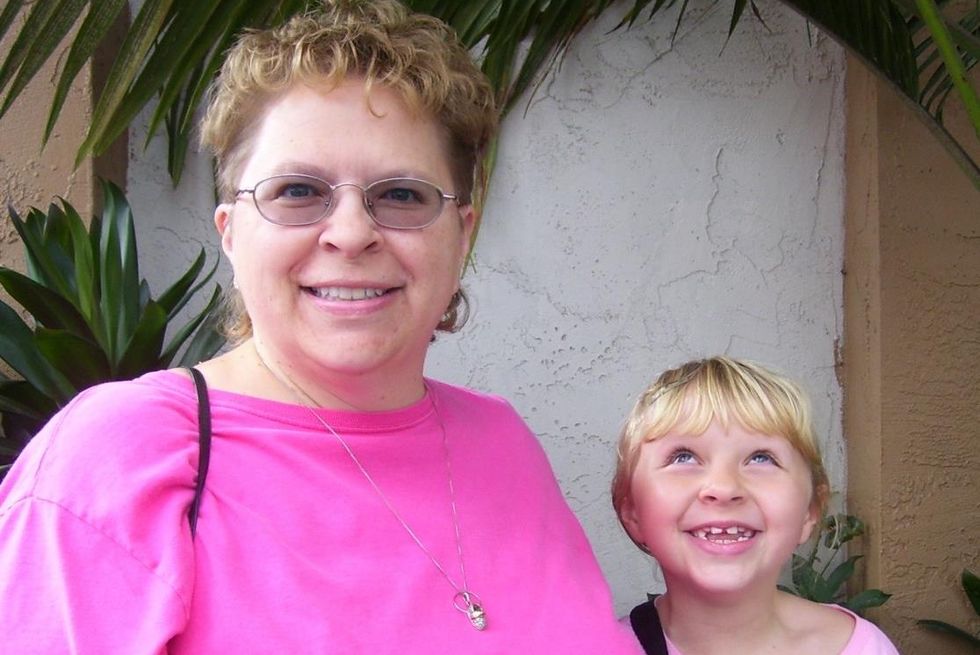While I had always imagined myself in a traditional family structure (first comes love, then comes marriage, then comes baby in a baby carriage…), the idea of single parenthood was always somewhere in the back corners of my mind, an alternate option. In my late 20s, I finally felt ready to settle down, but as each successive date or relationship didn’t turn into “the one,” I put my resolve into words: If I am still single at 35, I’ll have a baby on my own.
Once I started saying it out loud, I noticed that many other single women my age also had a ‘Plan B’ to dive into single motherhood at some point if they didn’t find a partner. However, when 35 finally arrived and my plan turned into reality, it was met with surprise that I was *actually* going through with it. But I felt ready — more than ready — to start the next phase of my life, to become a single mom.
So, I approached the turning point with pragmatism: first a doctor’s appointment to remove my IUD and get a referral to a fertility specialist, learning about different fertility options and the associated costs (which, ouch), and getting baseline tests done to assess my fertility. I decided to start with an intrauterine insemination (IUI), which I described to my friends as just slightly more complicated than the so-called "turkey baster" approach. I picked an unknown donor from a sperm bank and started the process, knowing that with only about a 15% rate of pregnancy per IUI for me, it would likely be still some time until I was pregnant.
One year, five IUIs, one miscarriage and two IVF implantations later, it was a roller coaster to finally get pregnant with a healthy baby girl. Now, my daughter is eight months old (as of Jan 1, 2023) and the joy of finally being a mom is just as incredible as I had imagined. I’ve never once doubted my decision to take the journey to become a single parent. But there have been moments — the first time I saw her on an ultrasound, the first time I heard her laugh — that I wish I had a partner to share these milestones with. And, I’ve discovered that while people are overall very supportive of my decision, many institutions still operate under the assumption that babies have two parents.
When I gave birth, even though I was at a hospital that markets itself as welcoming of all types of families, their visitation policy only allows parents or legal guardians to visit babies in the NICU. So, after my emergency cesearan when my daughter was taken to the NICU without me being able to hold her, I struggled to find out if she was okay or get any updates on her condition while I was kept in recovery. My doula, who I had hired for the birth, was not let into the hospital to see either me or my baby. Being alone, separated from my baby and unable to get support after a harrowing birth experience simply because that support person was a doula instead of a co-parent, was, so far, the hardest part of being a single mom for me. Just like changes were needed to bring institutional acceptance for other types of families, like same-sex couples, there is still progress that needs to be made for single parents, by choice or otherwise, to have the same rights and privileges as coupled parents.
Still, the immense joy of being a mom has eclipsed all of the challenges in this journey and the love I have for my daughter expands with every breath she takes. She already amazes me with her capacity for strength, curiosity, kindness and humor. And through her, I find a humbling ability to be the kind parent I always hoped I would be.
The importance of community for single moms is the reason that the organization Single Mothers by Choice was founded. Back in 1981, Jane Mattes started the community and has seen the number of women curious about the option increasing in recent years. “I think in part due to the women's movement, women have increasingly been seeing themselves as capable of being independent and strong,” Mattes says. “Given the ability to support ourselves well, women are more likely to postpone marriage until we meet the right person, and when our biological clocks start ticking loudly, we no longer feel we must have a partner to have a child — we can get married any time, but have a limited time in which we can become [pregnant].”
Becoming a single mom by choice has been incredibly empowering, but it is a privilege that many women cannot afford. (And that’s saying nothing of women who are single moms due to other circumstances — the challenges they face are in a whole other category.) Choosing to get pregnant on your own (or as part of a same-sex couple) is typically very expensive, as is the cost of raising a child in a single-parent household.
Take, just for example, the cost of finding donor sperm. Fertility expert Dr. Jenna Turocy of Columbia University Fertility Center notes, “For women who wish to conceive, they may get pregnant using donor sperm. Sperm vials typically cost between $400 and $1,000 dollars and fertility centers often charge an intake fee and storage fee. For women who wish to use a known sperm donor, the costs associated with a known donor may be more expensive than using an anonymous donor, requiring legal, psychosocial and cryobank involvement.”
The price only goes up from there. “The cost of assisted reproductive technology treatments varies considerably based on different factors, such as your location, potential insurance coverage and the desired outcomes of the procedure, which may entail doing multiple rounds,” says Dr. Sharon Briggs, Head of Clinical Research at Modern Fertility. She points to SART, which reports that IUI can cost between a few hundred dollars and $2,000 per cycle. According to the American Society of Reproductive Medicine, the average cost of a single cycle of IVF is $19,200. However, the full course of treatment brings the total average cost to over $40,000 including medications. “If your treatment requires donor eggs or a gestational surrogate, the costs continue to go up,” Dr. Briggs adds.
Joyce Gabbert is a single mom by choice to a 21-year-old daughter whose story resonated with me, even though her decision was made two decades before mine.“I had just turned 35 years old and Mr. Right was nowhere in sight," she tells me. "I felt like life was passing me by. I had no control over finding a husband, but I did have control over creating a family. I thought about it for another couple of years and I decided to take the plunge after hearing Green Day's ‘Time of Your Life’ on the TV show E.R. I didn't want any regrets at the end of my life.”
Although Gabbert felt her conception experience was relatively easy, the financial challenge was the most difficult aspect of raising her daughter as a single mom by choice. “I have a good job, but paying for daycare was a killer,” she says. “I paid the same as my mortgage payment! I had to go into debt to pay for it. Leaving her when I had to go back to work was really hard, too. I told myself that if it weren't for my job and the existence of daycare, she would not even exist.”
Even when she found affordable childcare, there were still challenges. “When Emma was an infant, I used a wonderful, licensed home daycare provider,” she says. “She was great and way cheaper than a daycare center, but it was hard if I had to do an early pickup if Emma was sick. Then, when Emma was two-and-a-half, my daycare provider broke her ankle and suddenly I was without childcare. So, I ended up switching her to a center. It cost way more than I could afford, but what are you going to do? You have to have childcare. It was a relief financially when Emma started school.”
Crystal King, a single mom by choice to a one- and four-year-old, also looked for alternatives to daycare at first. “With my first child, I really wanted my baby to have a consistent caregiver like a nanny for at least the first year,” she says. “I looked into nanny shares, but couldn't find any nearby. Having a nanny was out of my price range, so I took the au-pair route for a year. That was more costly than I expected — it was approximately $23,000 — but I felt that it was the best option for my baby and I suspected as a working mother it would result in minimal disruption at work. I was correct in that respect; my child wasn't sick at all her first year. When she turned one, I enrolled her in daycare and she was sick every week for the next eight months.” Some of those lessons King applied to her second child, saying, “I knew I wanted to have a 'do-over' in some of the child care decisions I made with my first. I took a longer maternity leave so I could bond with my baby and save money on child care expenses.”
With two young children, child care costs were even higher — and balancing work and single motherhood with no backup offered additional challenges. “Now with both children in the same daycare, I am paying less than I did when I had an au pair,” King says. “However, it also meant I had to miss meetings or try to work from home with a sick baby, which isn't fun at all. It was extremely stressful when I had to travel out of town for the day for work. I would pray daycare wouldn't call me to pick up my child if she became sick because I was over two hours away!”
Even when she was in town, King’s options were limited if either kid fell ill. “Finding back-up care for the day after your child is sick is difficult. One time, I brought my sick child with me to work at an off-site location because I had to present throughout the day and couldn't find back-up care. I felt awful for making that decision but I didn't want to lose my job. After I fulfilled that work obligation, I took her to the doctor, and she was admitted to the hospital for pneumonia. That was the turning point in my working-motherhood journey.”
In addition to being a good mom and balancing a career, carving out ‘me time’ can also be a struggle. King wishes she had made it more of a priority, sharing, “I had one of my babysitters come one Saturday a month for a few hours so I could spend that time doing what I wanted to do; usually it was making dinner uninterrupted, decluttering a room or responding to work emails. I could have benefited from having a babysitter come more often, but I didn't want to exceed the budget I created for childcare. Looking back, I should have spent the money; what could be more important than investing in yourself?! Being a two-time single mom by choice without any family nearby forced me to re-evaluate my life. I had an established career working for a Fortune 500 company but knew I would never be able to be the mother I set out to be, if I continued down that path. That is one of the reasons I started my own company, Amazing Baby. Life is short. Enjoy it.”
For Gabbert, she built a community to lean on to help her find balance. “It took me a long time to reach my dream, so I really relished being a mom. When I wasn't working, time was spent with my daughter. My sister was always available to help if I needed her to babysit. I'm a member of Single Mothers by Choice and I made lifelong friends with many of the members and we would often get together to gab while the kids played. We also traded off child care when needed.”
Challenges aside, the journey was worth it. Says Gabbert: “I was meant to be a mom and it's the best thing that's ever happened to me.”













